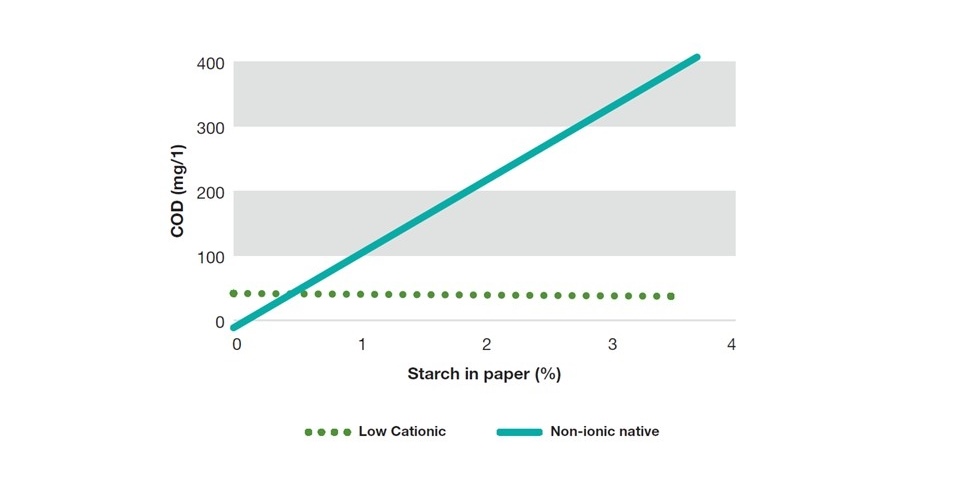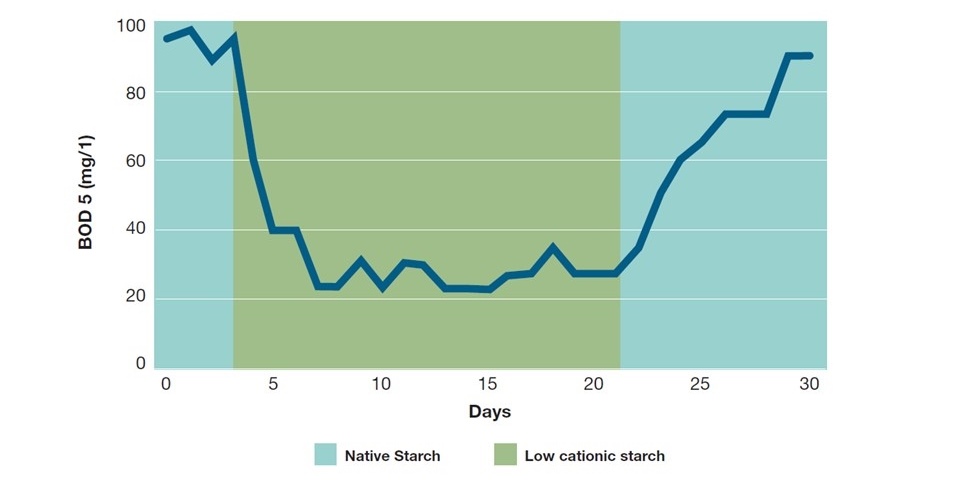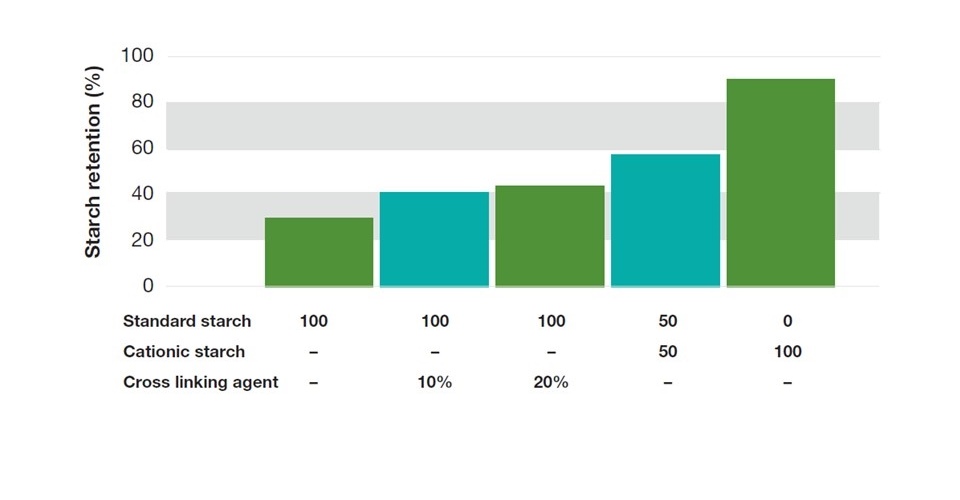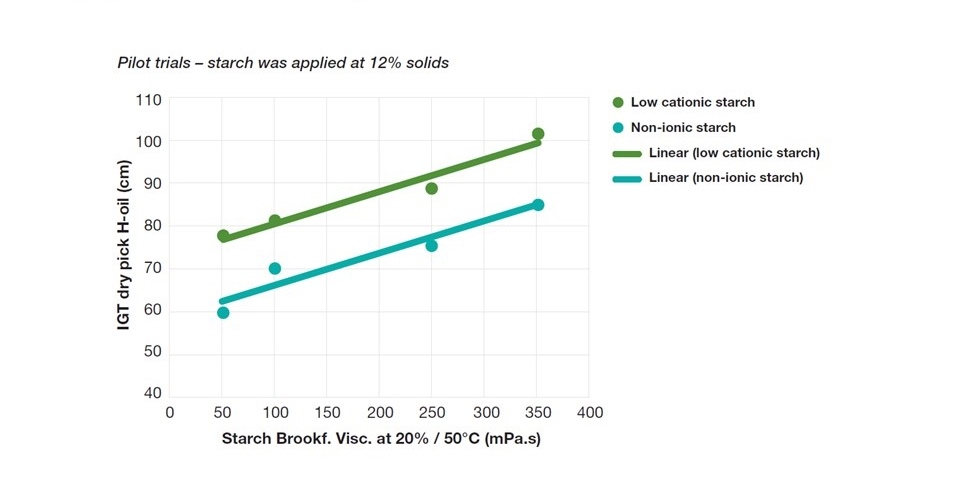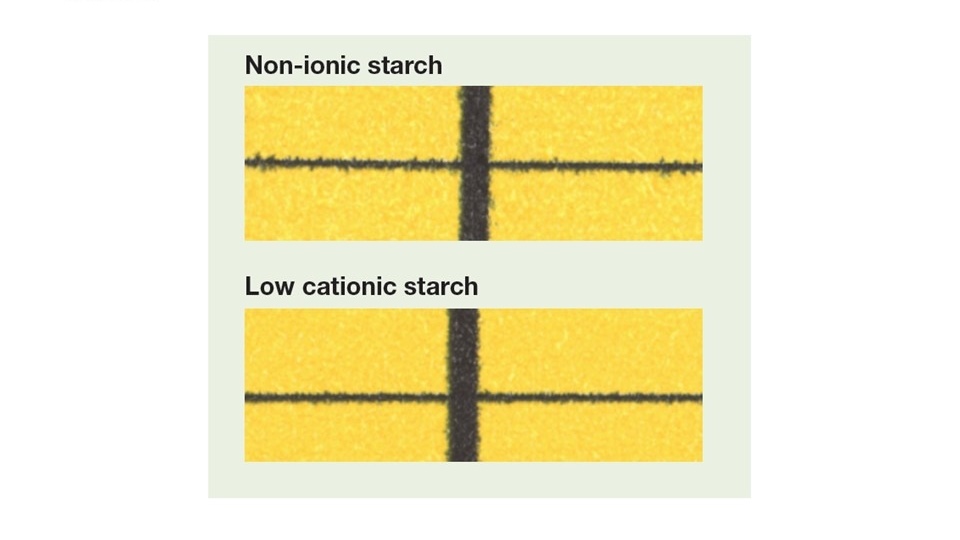P3 5-6/2023 en
Surface Sizing
Unlocking the Benefits of Low Cationic Starches
Focus On

Cargill: Low cationic starches used in surface sizing provide significant advantages to paper mills.
In the ever-evolving paper manufacturing industry, the quest for improved efficiency and sustainability continues to drive innovation. One such development is the use of low cationic starches for surface sizing applications. Unlike their wet-end counterparts, cationic starches designed for surface sizing have fewer cationic moieties in their molecular structure. This adjustment allows for optimal affinity with cellulose fibres and fillers, ensuring excellent self-retention of starch. Originally developed to address the challenge of starch load in fine paper manufacturer effluents, these cationic starches offer a multitude of benefits for modern mills.
Cargill: Low cationic starches used in surface sizing provide significant advantages to paper mills.
Surface sizing of fine paper is primarily used to increase the strength of the paper surface; it improves wet resistance and enhances printability by binding particles, such as fibres and pigments, to the paper surface.
C?Flex™ and C?Size™ are our standard starch solutions for surface sizing. They are traditionally hydrolysed via an enzymatic conversion process at the paper mill. Our new low cationic grades C?iSize™ are modified starches that do not require enzymatic conversion. They bring additional value, such as a reduction of the effluent load, and improved surface strength at smooth runnability of the machine.
There are several benefits to using cationic starches for surface sizing applications:
1. Reduction of effluent load
When comparing the chemical oxygen demand (COD) of a filtrate from repulped, surface-sized paper, it is evident that the COD value linearly increases with the add-on of non-ionic starches, such as enzymatically converted native starches. However, when cationic starches are utilized, the COD load of the filtrate remains significantly lower (Graph 1). With an industrial trial we also proved that the Biochemical Oxygen Demand (BOD) measured for 5 days followed a similar trend as COD. BOD was significantly reduced when using low cationic starch instead of native starch (Graph 2). The strong interaction between the cationic moieties of the starch and the anionic moieties on fibre and filler surfaces leads to more substantial ionic bonds, which are better maintained upon repulping. Consequently, the use of cationic starches results in a remarkable reduction in effluent load, making it a valuable solution for fine paper manufacturers seeking to comply with environmental regulations.
2. Improved self-retention and runnability
Surface sizing with low cationic starches offers substantial advantages in terms of self-retention. It has been observed that low cationic starch achieves a self-retention rate of 90% when paper is manufactured from 100% surface sized broke, while non-ionic native starches only achieve a retention rate of 30% (Graph 3).This increased self-retention ensures that a sizeable portion of starch is retained within the paper, reducing losses, contribute to strength and minimizing the need for additional fibre replacement to maintain consistent grammage.
Furthermore, the enhanced binding power of low cationic starches, derived from their strong ionic interactions, contributes to improved runnability, allowing for higher molecular weights without compromising machine performance.
3. Replacement of fiber with filler
The most impactful economic benefit of using cationic surface sizing starches is the ability to replace fibre with fillers and reduce total surface sizing starch consumption. The low cationic starches present in the internal broke support filler retention, leading to an increase in filler levels. By reducing the dosage of fresh filler, mills can achieve significant cost savings. For instance, a Scandinavian fine paper mill saw a 1-2% increase in filler levels, allowing for a 5% reduction in fresh filler usage, resulting in annual savings of several million SEK.
4. High surface strength and additional savings
It is proven that at a comparable viscosity level, a low cationic starch tends to less sheet penetration when applied with a size or film press compared to a non-ionic native starch. This is again due to its interaction between the low cationic charged starch with the anionic charged fibres at the paper surface which maintains more starch onto the sheet (Picture 1). This effects much higher surface strength which enables the paper mill to reduce the surface sizing starch consumption by ca. 30% without decrease in surface strength.
The advantages of low cationic starches extend beyond effluent reduction, improved runnability, filler replacement and higher surface strength (Graph 4). Their higher presence in the broke leads to improved drainage, reduced refining energy requirements, increased production capacity, and savings in retention aids, sizing agents, and dry strength agents like wet-end starch. These additional savings contribute to overall cost reduction and process optimization.
5. Inkjet printability
In today's digital age, paper manufacturers must also consider the printability requirements of modern ink-jet technologies. Low cationic starches demonstrate exceptional ink-jet printability, making them an ideal choice for modern office environments and digital printing applications. Their superior interaction between the low cationic starch and the anionic inkjet inks ensure that the ink is effectively absorbed and immobilized on the paper surface (Picture 2), resulting in sharp, vibrant prints with minimal feathering or bleeding (Picture 3). The enhanced print quality achieved with low cationic starches allows for precise and accurate reproduction of text, images, and graphics with high colour gamut, meeting ambitious standards of ink-jet printing. Whether for black and white or multicolour printing, low cationic starches offer excellent ink absorption and drying characteristics, enabling fast printing speeds, and enhancing productivity. Paper manufacturers can rely on low cationic starches to deliver exceptional print results that satisfy the demands of today's dynamic and fast-paced printing industry.
In conclusion, low cationic starches used in surface sizing provide significant advantages to paper mills. Our C?iSize™ low cationic starches are designed to improve paper surface strength, reduces effluent loads, and helps to avoid stock losses. In addition, it is possible to replace expensive cellulose fibre by filler without sacrificing quality. These starches are improving overall paper quality and offer a comprehensive solution that combines environmental benefits with economic efficiency. With their positive impact on the papermaking process and ink-jet printability, low cationic starches are a valuable instrument for achieving optimal results in the industry. A valuator calculation tool is available to declare and define cost saving potentials.
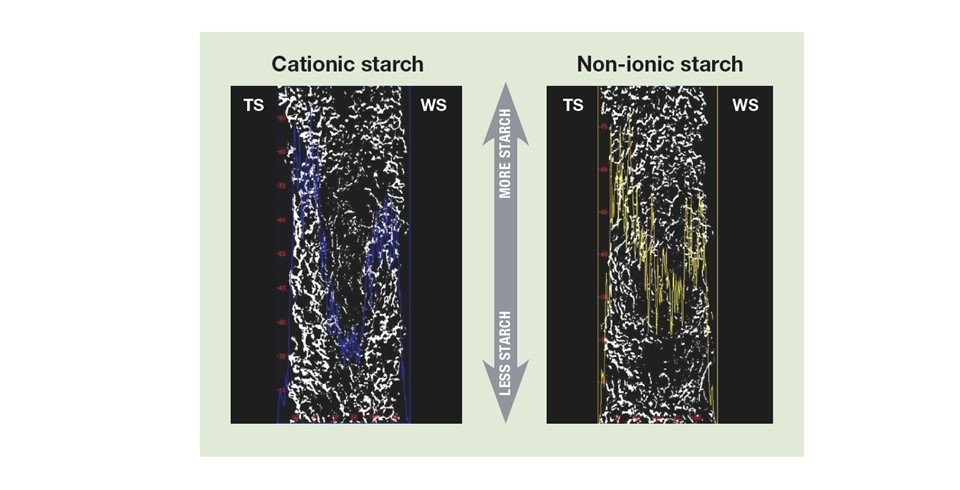
Picture 1: Binary pictures from microtome section (white areas are starch; starch distribution in Z-direction where the lines reveal starch intensity).
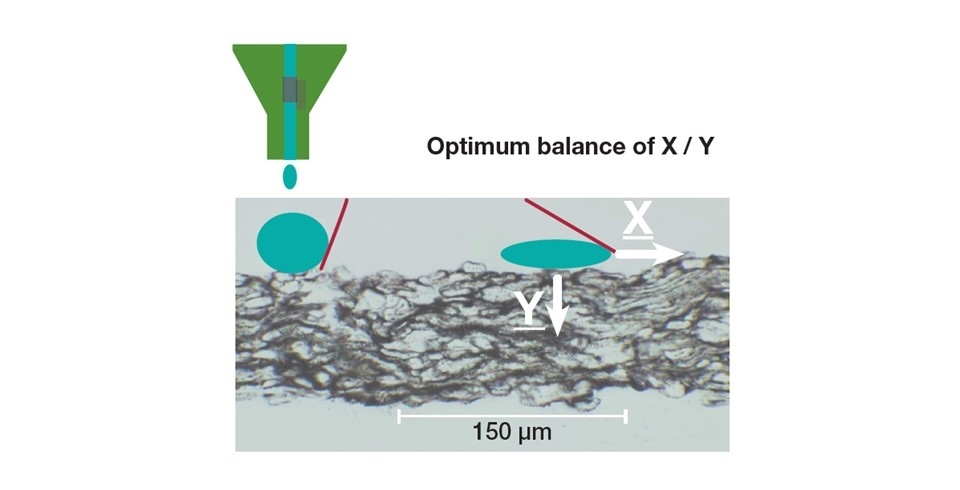
Picture 2: Low cationic surface sizing starch fixes the anionic dye on the paper surface and define the diffusion of the ink into the paper.
Andreas Voigt, Technical Account Manager Industrial, Cargill Food and Bio
Editor: sbr
Images: Cargill






